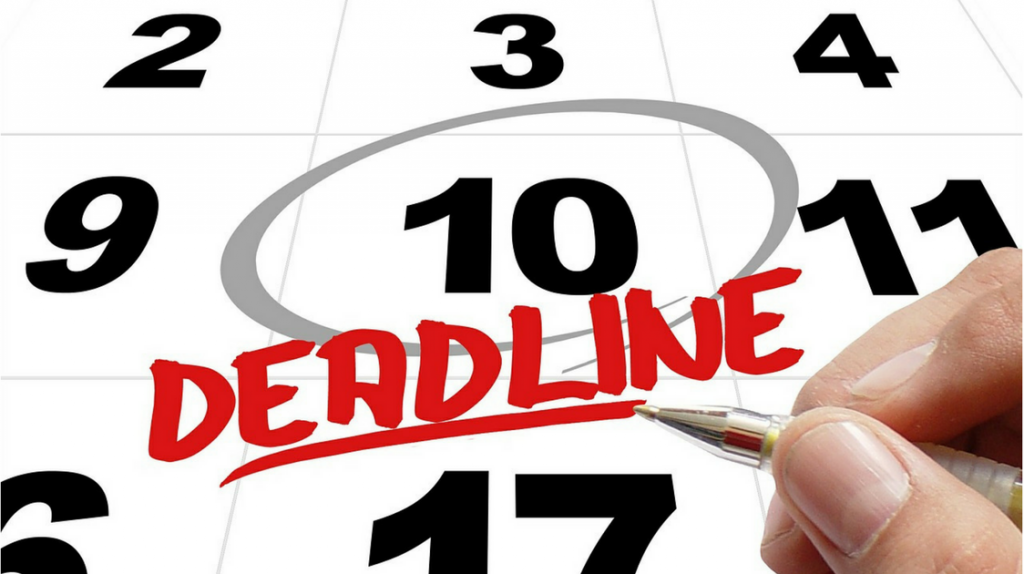How to meet deadlines at work

We know deadlines are important for adding structure to your working day but what steps can you take to end the week with a shorter to-do list?
Care about your deadlines
Whether you set the deadlines yourself or they’ve been set by another person, if you don’t care about deadlines then you’ll be less inclined to try and meet them. With multiple projects on the go at once, it will hinder your performance if you don’t acknowledge and respect the deadline that’s been set for each task.
Be clear about exactly when the deadline is for and what is expected
This often depends on who originally set the deadline and whether it’s set in stone. Of course you want to be meeting all of your deadlines but it’s important to know the ones that will make a big impact on your work performance and those that have no buffer room, as these will need prioritising.
Keep a list of projects with deadlines
Display your task list in a place where your team can see them too. When everyone has visibility of each other’s tasks it can provide motivation to hit your goals. It also gives a record of progress which can be especially useful if someone is unwell and the team needs a quick overview of pressing deadlines.
There are some great planning tools available online and here at ResponseSource we use Asana. We find Asana really useful for sharing our tasks across departments and managing our workload.
Sites like Trello let you create project boards and Hootsuite lets you schedule and plan social media content. Try out a few tools before settling, you’ll need to find one that works for you.
Teamwork – work together to get things done on time
If all of your projects are in one place where the whole team can see them, then it’s much easier to know each person is progressing with their task list. Have regular meetings to review tasks and discuss priorities. It’s important to know exactly where everyone stands and admit if you need help to complete a task.
Break the deadlines down to into steps
One huge task can seem daunting and take ages to be crossed off your list. Break each large task down into smaller bite-size subtasks that can easily be completed and crossed off your list. You’ll feel much better knowing that you have done 60% of the tasks towards a final project.
Subtasks should also have deadlines – I know, that means you’ll have 30 tasks instead of 4! Sorry, you’ll thank us in the end!
Block off adequate time to complete each step
Set yourself time to complete each part of the task and remember to allow extra time for other people to finish their part. Using a calendar that your team can view is ideal. Outlook or Gmail calendars are a great way of blocking out time. They also give you reminders too, so if you set these for an hour in advance it can help you see if you’re on track with your current task and ready to move to the next in an hours’ time.
Visually blocking off time is also a great way of helping you to assess whether you are actually over servicing a client.
Don’t be a perfectionist
Of course the work needs to be completed to a good standard and may need sign off from a client and other members of your team but there’s no need to make hundreds of revisions.
Planning, prioritizing, and preparing are all essential, but the execution is what matters in the end.
Avoid the ‘single detail debate’ where there’s toing and froing between your team or client about a small and probably unimportant detail such as whether you should use one word or another.
Be flexible
If another deadline falls on your desk, which it always will, you need to take the time to realign your priorities. Occasions like this are where the team meetings in step 4 will really show their benefits.
If you’re struggling with any deadline, take a step back and decide if someone else can take over part of it so that the final deadline can be met.


